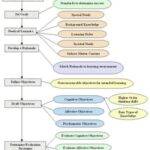Course: 11th/12th grade Language Arts
Lesson: Introduction to Creative Non-Fiction
*Note, students must be familiar with regular nonfiction before this will truly resonate with them*
Anticipatory Set: Have students read “Life is Precious, Or It’s Not” by Barbara Kingsolver. This is an essay that can be found in Kingsolver’s book of essays entitled Small Wonder.
Objectives: At the end of this lesson, students will understand the basics of what constitutes a creative nonfiction essay. Students will demonstrate their knowledge by analyzing the essay “Life is Precious, Or It’s Not” by Barbara Kingsolver.
Procedure/Input: Teacher will define creative nonfiction as concisely as possible. The weaving of narrative with facts and critical analysis.” Examples can be given such as In Cold Blood by Truman Capote, One Writer’s Beginnings by Eudora Welty, Small Wonder or High Tide in Tuscon are creative nonfiction essays by Barbara Kingsolver. On the board, teacher will write out the common elements of creative fiction and go through each one, explaining what they mean. The common elements of creative nonfiction are as follows:
-Flexibility of Form: Creative nonfiction can follow any form–essay, short story, even poetry.
-Literary Approach to Nonfiction: Use of literary devices like tone, dialogue and description.
-Self-discovery, Exploration: Creative Nonfiction is all about exploring an idea or issue, self disovery and exploration is a result of this.
-Personal Presence: the writer’s voice creates an identity–usually themself.
-Veracity: conveying the truth, in other words including facts and critical analysis
Lastly, teacher will lastly explain what a creative nonfiction essay needs to accomplish. The creative nonfiction piece goes beyond a personal story and teaches the reader something, expands the readers thoughts, opinions, makes the reader see something in a different light.
Modeling: Teacher will give one example of “personal presence” from “Life is Precious…” Teacher will explain how this sentence is personal presence and how that affects the story. For example, in Kingsolver’s essay she refers to herself as “I” and talks about “my friend.” Use one example to show the students how she creates a personal presence. For veracity, anytime Kingsolver references a fact, historic event, or analyzes something on the basis of fact. Kingsolver lists Iraq, the Sudan, Waco–these are all examples of veracity.
Check for Understanding: Teacher will ask class for one example of “veracity” from the essay. One student to give a sentence from the essay, another to explain why it is an example of veracity, and a third to explain how it fits into the essay as a whole or what that means to the essay.
Guided/Independent Practice: Teacher will instruct students to go through the essay and label as many sentences of personal presence and veracity as possible.
Closure: Teacher will ask the class what they come up with and take as many answers as time allows, always discussing how they are examples and how they pertain to the work as a whole.






